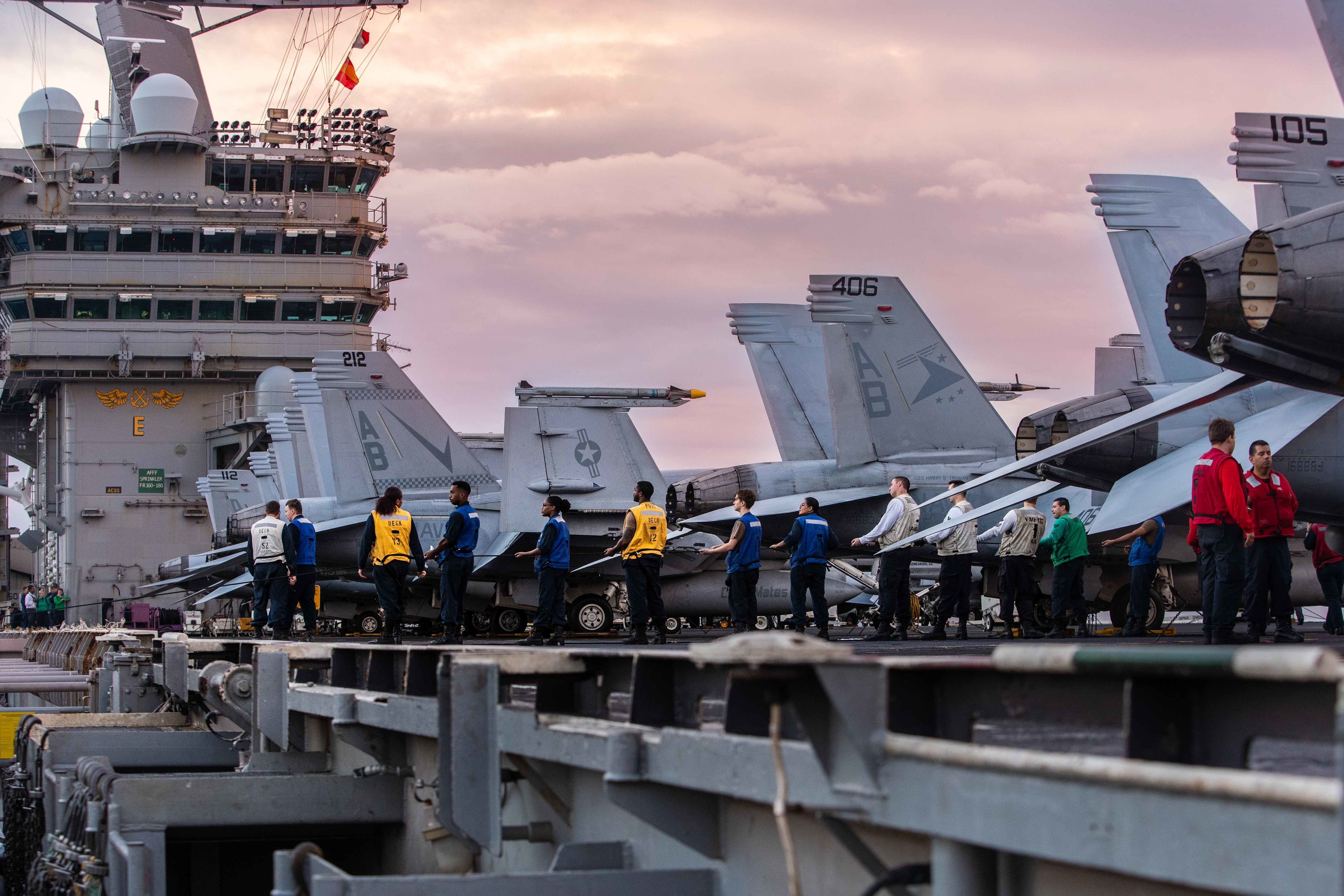
Putting an American aircraft carrier strike group under alliance control should be a “clear message to Russia” that its 30 members are unwavering in their commitment to come to each other’s defense if attacked, NATO’s secretary general said Friday.
Jens Stoltenberg, secretary general since 2014, – when the Kremlin annexed Crimea and openly supported separatists in eastern Ukraine – said he expected the same hand-over of command from the United Kingdom and France as the countries move naval, air and ground forces into member nations on the Black Sea.
Stoltenberg “was reluctant now to go too far” in detailing NATO’s options if the Ukrainian crisis escalates to armed conflict.
On the alliance build-up on its borders, “they are there to defend NATO allies,” not attack Russia, he said.
He welcomed news of the United States putting 8,500 soldiers and airmen on alert for deployment to Europe. In “times of uncertainty,” it was important that “North America and Europe stand together.”
On France, which is nearing its first round of presidential voting, Stoltenberg added he was confident it would it maintain its commitment to bolster presence in Romania and Bulgaria. France “has high-end capability [and has demonstrated] the ability to deploy,” he said.
For more than 70 years, the alliance’s strength rests on the principle of “one for all, all for one” if attacked, Stoltenberg said, adding that’s what these movements demonstrate.
“We already have assets on the ground” in eastern Europe and naval and air assets in the Baltic and Black Sea member states, Stoltenberg added. “We’ve actively increased the readiness” of the alliance’s entire 40,000-member quick reaction force, and not just its 5,000 first responders, for rapid deployment eastward and southward.
He warned the Kremlin there “will be severe consequences” if Ukraine is invaded, pointing to Russia’s new military exercises with Belarus and massing of troops, armor and artillery on its western borders.
In the instance of an armed invasion of Ukraine, he referred to economic sanctions against the Kremlin rather than an alliance military response. Later, he added Russia is capable of using cyber to attack Ukraine’s economy and security network, carrying out acts of sabotage or providing the means for a coup to overthrow its government. These are other possibilities short of invasion that NATO has to plan for.
“There’s no certainty about Russia’s plans,” he added in an online question-and-answer Atlantic Council forum. The alliance “is ready for both options,” with Moscow over Ukraine – continued negotiations or a response.
The U.S. and NATO presented their written responses to Russia’s earlier demands concerning Ukraine Thursday.
While the U.S. has place 8,500 troops on increased readiness, the country has not moved any troops to Ukraine, Secretary of Defense Lloyd Austin said during a Friday press briefing.
“There’s no reason that this situation has to devolve into conflict,” Austin said. “[Vladimir Putin] can choose to deescalate. He can order his troops away. He can choose dialogue and diplomacy. Whatever he decides, [the] United States will stand with our allies and partners.”
Stoltenberg rejected out-of-hand one of Russia’s key demands that Ukraine never be allowed to join NATO.
“Our door is open; we will never force anyone in that door,” he said. To say otherwise, Putin and Kremlin leaders “know that they’re not telling the truth.”
He added that if Sweden and/or Finland applied for membership he expected they would be able to “join quickly” since their forces are interoperable with the alliance’s and are meeting NATO’s standards for governance.
“Support to Ukraine is important,” he said.
Stoltenberg mentioned Canada’s dispatching of trainers to the country and the shipment of more defensive weapons to Kyiv. The alliance was also working with Ukraine on cyber defenses, sharing information and response. He conceded there were “some differences” among NATO members of just how to respond to the crisis.





